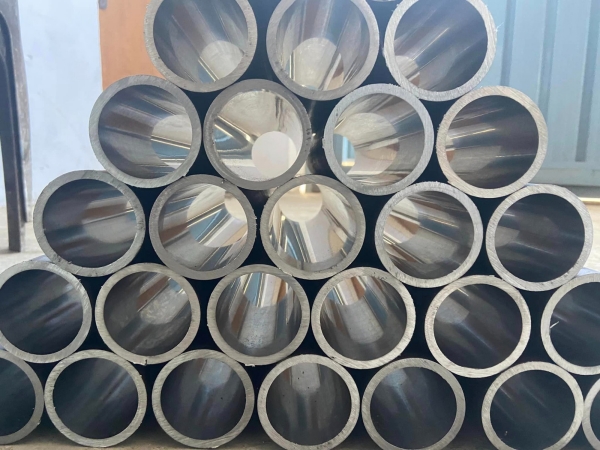DIN 2391 ST52 is a standard specification for seamless precision steel tubes. These tubes are primarily used in hydraulic and pneumatic systems, as well as in automotive and mechanical engineering applications. ST52 refers to the material grade, and it is a commonly used grade in the manufacturing of seamless steel pipes. This article will talk about DIN 2391 ST52 seamless steel pipes, read on to learn more.

Specifications of DIN 2391 ST52 Seamless Pipes:
|
Standard |
DIN 2391 |
|
Grade |
ST52 |
|
Size |
OD (4-190mm) x WT (0.5-15mm) |
|
Outer Dimensions |
4.0mm – 60.0mm |
|
Wall Thickness |
0.5mm – 8 mm |
|
Length |
max 6000mm |
Chemical Composition of DIN2391 ST52 Seamless Pipes:
|
Standard |
Grade |
C |
Si |
Mn |
P max |
S max |
|
DIN2391 |
St52 |
≤0.22 |
≤0.55 |
≤1.6 |
0.025 |
0.025 |
Mechanical Properties of DIN2391 ST52 Seamless Pipes:
|
Grade |
Thickness |
Yield |
Tensilmie |
Elongation |
Impact Energy(KV J) min |
||
|
St 52 |
mm |
Min Mpa |
Mpa |
Min % |
-20° |
0° |
+20° |
|
≤16 |
355 |
490-630 |
22 |
40 |
47 |
55 |
|
|
16> to≤35 |
355 |
490-630 |
22 |
40 |
47 |
55 |
|
|
35> to≤50 |
345 |
490-630 |
22 |
40 |
47 |
55 |
|
|
50> to≤70 |
325 |
490-630 |
22 |
40 |
47 |
55 |
|
|
70> to≤100 |
315 |
470-610 |
21 |
40 |
47 |
55 |
|
|
100> to≤150 |
295 |
450-590 |
21 |
40 |
47 |
55 |
|
Tolerance of DIN 2391 ST52 Seamless Pipes:
|
OD Tolerance |
4-30mm |
31-40mm |
41-50mm |
51-60mm |
61-70mm |
71-80mm |
81-90mm |
91-100mm |
|
±0.08mm |
±0.15mm |
±0.20mm |
±0.25mm |
±0.30mm |
±0.30mm |
±0.40mm |
±0.45mm |
|
|
WT Tolerance |
±10% |
|||||||
Application of ST52 DIN 2391 Seamless Pipes:
- Bridge structure
- Marine structures
- Engineering
- Construction
- Oil and Gas
- Petrochemical